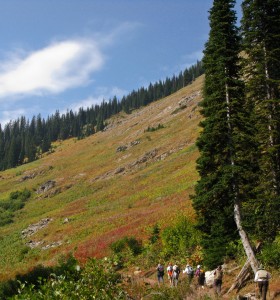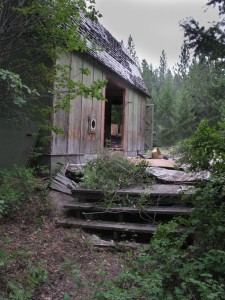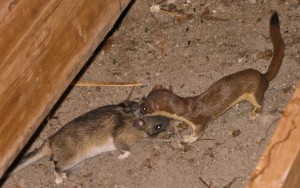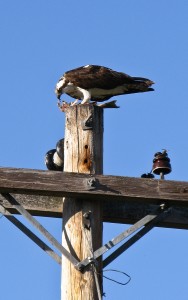Swipe of memory
Lush fruiting houndstongue sticks tight
into November.
THE POND
Fog lies heavy in the river bottom in the civil twilight,
that hour before dawn where a pond sits
in the center of a cloud of unknowing,
her canvas patiently blank, a veiled white mirror.
Slowly the sun crests the ridgetops
The veil brightens incrementally
Something sparks on the surface of her thoughts
as a thousand minuscule droplets of water
bounce the first glimmers of light through the forest.
Faint brown sketched lines of tree trunks and limbs
emerge from the mist, merely giving a hint of their form through the haze.
As they seemingly creep toward her,
lines criss-cross the canvas in a growing web,
cast out to capture the impressions just beginning to take shape.
The artist waits in perfect calm,
though the sun is half way up the sky now,
a pale specter behind the screen of cloud slowly lifting
And then the first spears of grasses
lightly pierce the bottom of the scene.
She does not become ruffled, but remains still,
waiting for whatever is before her
to reveal itself in its own time.
The growing heat of mid-day at last begins to burn away the fog
leaving behind glistening splashes of color
Struggling to keep up with the flood:
sage and grass, moss and spruce, celandine and leaf,
the artist fills her canvas with a wash of variegated shades of green.
Sky blue and dandelion fluff white, earth brown, redosier red,
ocher bark and silver-gray trunks
and then still more, golden rod yellow, seed pod taupe, flax blue, and scarlet gilia
it is all there reflected on the canvas in lifelike detail.
She admires her nearly perfect reflection until
an afternoon breeze begins to play
among the top branches of the ponderosas.
It’s gentle touch across the artist’s face
shakes loose her attachment to her creation.
She slowly begins to smear her paint
letting the wind direct her hand so that the colors ripple
until the forms of tree and bush, grass and sky
are barely discernible in the swirling kaleidoscope of the canvas.
And there in the fathoms of shifting light and the winds of change,
the painting reveals, just below the surface,
a shimmer of impermanence,
the deep current flowing through everything.
The summer sun pulls me outside in the early morning. My bare feet curl long strands of grass between my toes. It is the kind of morning that makes you want to lie down on that soft cushion of green and spend the day watching the clouds shape-shift in the sky. But the solid blue above is empty of possibility. The sun beats down and soon sends me inside sweating.
Relentless sky blue,
sungold, and verdant green mix,
make burnt sienna
Clear blue sky day after day. Banks of mud encrusted rocks rise from the shore. The heron moves closer to the middle of the river. I move to the center of the trail, my bare legs scratched by dry grasses. The breeze begins to stir as the sun moves past the zenith of the sky. Hot breath of air buffets my sun reddened shoulders. By afternoon, no rain, only wild gusts of wind to cool the land.
victorious over fire,
beheaded by wind.
With the wind comes clouds. Clouds heavy with rain, drop only lightening bolts. Sonic booms of thunder rattle the peace of evening, shaking the dessicated landscape. The next morning, I am again pulled outside as thunder gives way to the growl of low-flying planes. I scan the mountainsides, looking for thin tendrils of smoke. Another blue sky day.
Burning memories
held by hills, skeleton trees
watch the sky for rain.
The phone rings. Our hike to Bear Mountain has been cancelled. A fire has erupted and the lookout is evacuated by helicopter. The clear blue skies of are now filled with silver and red slurry bombers. The evening news shows maps speckled in red flames across the west. But an empty halo encircles Missoula.
Their bounty withheld,
oblivious to the drought,
evening rain clouds flame.
A month of relentless sunny forecasts. Still, the blue skies fade into a dirty brownish grey. Smoke rides the jet stream where storms used to blow in, from Idaho and Washington. I no longer am pulled outside as the heat withers every living thing and the smoke clouds the breath.
Once in late August
fire turns Montana black,
and the blue moon orange.
The grey shrouded afternoon quiet is shattered by the sound of the phone. A friend across the valley asks about the smoke plume. I look to the hillsides, but nothing. Then the distant rumble of sirens. It is not just the smoke that has made me hold my breath these last weeks. I walk to the bridge and look north down the river.
Clouds rise from mountain
to sky, river rises in
buckets to mountain.
An army of a hundred men in yellow nomex wield polaskis. Back breaking fire lines are built. Tankers bomb the hillsides rusty red. Luck does her part, calming the winds. The fire is surrounded. The teams go in for the final kill of any living coals. Then the green trucks come and whisk the firefighters away to new battle lines.
Forty two days dry,
droughts worsen, a record breaks,
but not the weather.
At last the sky is grey, the deep grey of heavy rain clouds, not the veil of dirty smoke over blue. The first drops falling from the sky smell like campfires. The ground seems to smolder as the drizzle hits the dust, sending up small wiffs. Two weeks of spattered rain storms and it’s over. Golden leaves are the only flames on the hillsides and the first snow extinguishes the season.
 When I was a child, hiking with my parents, we would stop every once in awhile and sit on a rock or downed log at the side of the trail. My father would ask me where in the world I thought I was. Unfolding the bulky topographic map and looking to the hillsides, I tried to match their slopes to the squiggly brown waves of lines on the map.
When I was a child, hiking with my parents, we would stop every once in awhile and sit on a rock or downed log at the side of the trail. My father would ask me where in the world I thought I was. Unfolding the bulky topographic map and looking to the hillsides, I tried to match their slopes to the squiggly brown waves of lines on the map.
I thought about that on our recent hike to Cliff Lake. I had borrowed my husband’s GPS and used it to mark waypoints and plot out our route. I knew exactly where I was at every step–at least within a few dozen feet. Aided by 7 satellites, my progress was recorded on the little screen that told me my direction, my altitude, the distance to the lake, the distance we had come and what my hiking pace was. It even told me how long it would be until the sun set. The one thing it didn’t inform me of was the giant mud puddle in the trail, which I walked right into, my eyes affixed to the little screen.
That managed to break the GPS’ spell. I thought back to those pre-GPS times when you had to look around you instead. Gene shared the trick of using your analog watch (yes, we old timers still wear watches with hands) to tell where south is. Holding up your wrist and aligning the small hand with the sun, you could find south halfway between the hour hand and the minute hand. A map could give us good idea of altitude, but knowing that we were walking through a forest of subalpine fir gives us a rough approximation and finding treeline on the hillsides around the lake told us we were nearly 6,000 feet high.
Those watches came in handy again, by telling us how long it had been since we left the trailhead. Years of hiking means we know we have a pace of about 20 minute miles–longer if we are going up steep paths or taking pictures or stopping to discuss the identity of wildflowers. Shorter if we are a long ways from the trailhead in the late afternoon and we’re hungry or going downhill. And having the map in our memory will tell us at what part of the trail the creeks must be crossed. Simply listening for water will tell us how close we are to that crossing.
As for the sunset, my father taught me how to tell when it would slip behind the peaks and the air would chill. Holding your hand out at arms length, the fingers horizontal, you place your pointer finger parallel to the ridge line and count the number of fingers between that and the bottom of the sun. Each finger equals 15 minutes.
I think, when my father asked me where in the world I was, he was not asking for the co-ordinates of my position on the map, he was asking me how deeply conscious I was of the world around me. It is not a question that can be answered by a GPS.
 I have come to the homestead to escape my garden. For weeks now I have been harvesting and freezing and canning, putting by against the long winter. Here, by the old barn the leaves of the wild roses and the serviceberries are just starting to turn, the tips of the larch needles lighting up with a pale yellow glow and the berries on the kinnikinnick are juicy with red. It is mellow and peaceful here, away from the city where “the world is too much with us; late and soon/getting and spending we lay waste our powers.” ( Wordsworth)
I have come to the homestead to escape my garden. For weeks now I have been harvesting and freezing and canning, putting by against the long winter. Here, by the old barn the leaves of the wild roses and the serviceberries are just starting to turn, the tips of the larch needles lighting up with a pale yellow glow and the berries on the kinnikinnick are juicy with red. It is mellow and peaceful here, away from the city where “the world is too much with us; late and soon/getting and spending we lay waste our powers.” ( Wordsworth)
It is mellow and peaceful that is, until a great clattering arises from the barn. Small urgent feet scrabbling over loose boards, banging and thumping and then a high pitched squeal, the sound so long and sharp it keeps me nailed to my chair before it ends.
Silence once again and I move slowly to the barn door to peer in. At first I don’t see anything but the heaps of dried greenery and old boards in the packrat midden. Then a flash of movement out of the corner of my eye and I spot a long tailed weasel, his jaws in a vice grip on the neck of a lifeless packrat. His shiny little eyes are fixed on me and the moment I turn my head he lets loose his prey and scurries out of sight. I retrieve my camera and then stand at the door as still as possible, the lens aimed at the hapless packrat. I can see his massive nest-cache beyond, something silver and shiny peeking out from the foliage, a long string of red carpet thread, a brass coat hook, the pink puffballs of chewed up insulation and a half dozen cassette tape cases, the long streamers of shiny brown tape in ribboned tangles. It is months worth of gathering, harvesting all those branches of leaves, but also a strange hoarding of glittery, colorful baubles with no purpose.
Eventually the weasel returns and I freeze in place, snapping pictures as the weasel circles, as if considering an engineering problem. He is smaller than the carcass. At last he latches on to the packrat’s neck and begins to drag the bounty away to the abandoned burrow of another mammal where he lives. There will be no caching and hoarding for the weasel though. He will feed on the packrat for at most a couple of days, then return to the hunt. He must eat a third of his body weight each day.
One last look at the abandoned packrat nest. I leave shaken, not by the violence of the small death I witnessed, but by the now useless nest and the life of the hoarding packrat. I drive back to my own overflowing nest of home.
 Perched on the thin cross-rail of the power line pole the osprey stands, silvery fish clasped in her talons, balancing on the slippery scales as she pecks and pulls at the stringy entrails. She is on the verge of a big change, a migration from the land where she raised her chicks in the big stick nest down the road.
Perched on the thin cross-rail of the power line pole the osprey stands, silvery fish clasped in her talons, balancing on the slippery scales as she pecks and pulls at the stringy entrails. She is on the verge of a big change, a migration from the land where she raised her chicks in the big stick nest down the road.
Her grown chicks circle over the river, diving awkwardly toward the water on barely tested wings. The larger one strikes the silver surface of the river, but he rises again with empty dripping talons. The mother osprey looks up from her meal, watches as the other chick makes a dive. He pauses, flailing on the surface of the river, thrashing his wings, but whatever he thought he’d grasped squirmed away and he returned to his slow circling over the water.
The osprey repositions herself on the fish beneath her, tilts a bit to the side as it seems to slip off the pole, but her grip is tight–her sharp claws dug deep in its flesh and balanced again, she thrusts her beak deep into the meat, ripping it from the carcass in great chunks, throwing her head up to let them slide down her gullet. She seems to be taking great pleasure in this solitary meal, no longer needing to regurgitate it for her chicks, confident that despite their awkward attempts , hunger would focus their skill.